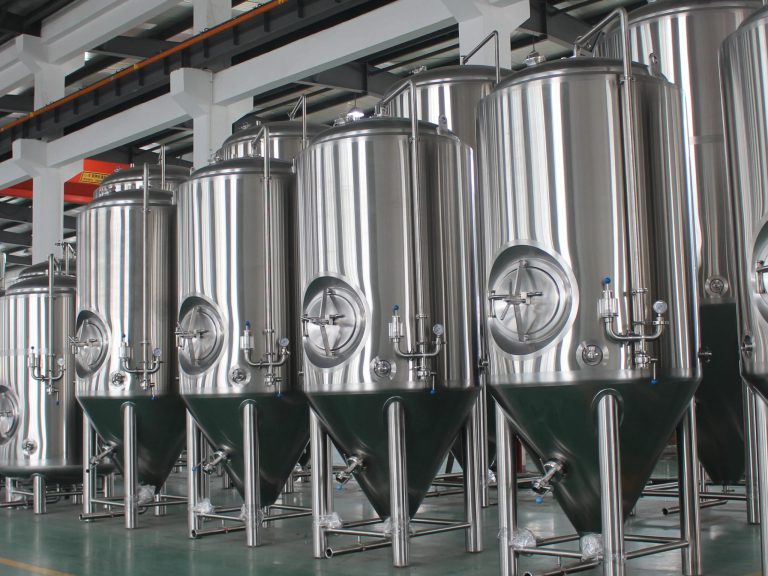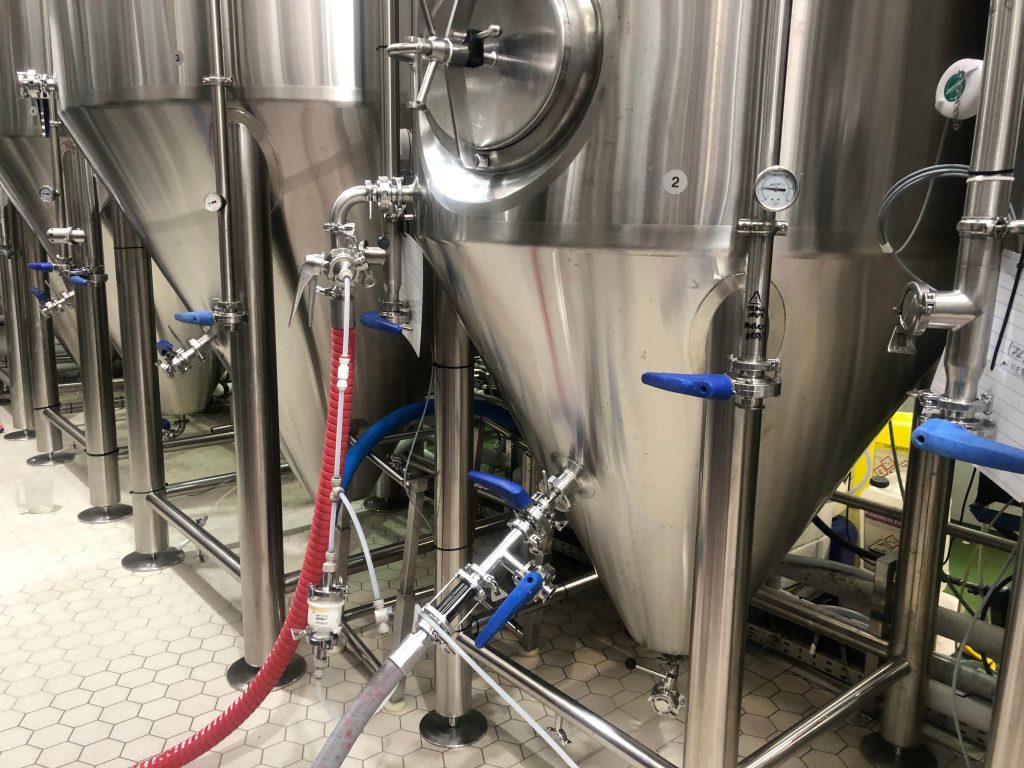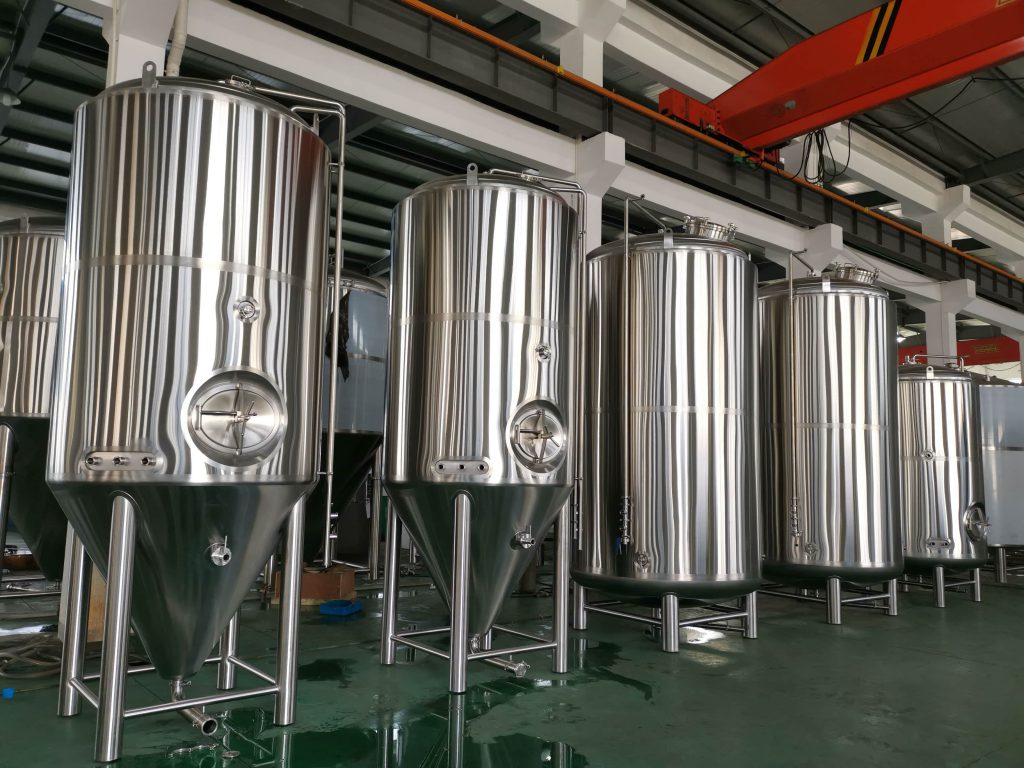Introduction

In the world of brewing, the quality of your beer is significantly influenced by the equipment you use. Stainless steel brewing tanks have become a staple in the industry due to their remarkable benefits and advantages. This article delves into how stainless steel brewing tanks enhance the quality of your beer, exploring their features, benefits, and impact on the brewing process.
Understanding Stainless Steel Brewing Tanks
Stainless steel brewing tanks are essential components in the brewing process, utilized for various stages including fermentation, conditioning, and storage. Made from high-grade stainless steel, these tanks offer durability, resistance to corrosion, and ease of maintenance.
Key Features of Stainless Steel Brewing Tanks
- Corrosion Resistance: Stainless steel is highly resistant to corrosion, ensuring that the tanks maintain their structural integrity and do not impart any unwanted flavors to the beer.
- Temperature Control: Stainless steel tanks are designed to provide precise temperature control, which is crucial for maintaining consistent brewing conditions.
- Ease of Cleaning: The smooth surface of stainless steel tanks allows for easy cleaning and sanitization, reducing the risk of contamination.
How Stainless Steel Brewing Tanks Impact Beer Quality
The quality of beer can be greatly enhanced through the use of stainless steel brewing tanks. The following sections explore the various ways these tanks contribute to superior beer quality.
Consistent Temperature Regulation
Maintaining the right temperature throughout the brewing process is essential for optimal yeast activity and fermentation. Stainless steel brewing tanks are equipped with advanced cooling and heating systems that ensure precise temperature control, preventing any fluctuations that could negatively impact the beer.
Table: Temperature Control in Stainless Steel Brewing Tanks
| Tank Type | Temperature Range | Temperature Stability |
|---|---|---|
| Single-Walled | 5°C – 20°C | ±0.5°C |
| Double-Walled | 5°C – 20°C | ±0.2°C |
| Jacketed Tank | 5°C – 20°C | ±0.1°C |
Enhanced Oxygen Control
Oxidation is a major concern in brewing as it can lead to off-flavors and spoilage. Stainless steel brewing tanks are designed to minimize oxygen exposure, preserving the beer’s freshness and quality. Features like airtight seals and purging systems help reduce oxygen contact.
Improved Hygiene and Sanitization
The smooth and non-porous surface of stainless steel makes it easier to clean and sanitize brewing tanks. This prevents the growth of harmful bacteria and yeast strains that could otherwise compromise the quality of the beer.
The Benefits of Using Stainless Steel Brewing Tanks
The transition to stainless steel brewing tanks offers several benefits that positively impact both the brewing process and the final product.
Durability and Longevity
Stainless steel is renowned for its durability. These tanks are built to withstand the rigors of brewing, including high pressures and temperatures. Their longevity ensures that brewers can rely on them for consistent performance over time.
Improved Taste and Aroma
The non-reactive nature of stainless steel means that it does not impart any flavors or odors to the beer. This purity helps in preserving the intended taste and aroma of the beer, allowing the brewmaster’s craft to shine through.
Reduced Maintenance Costs
Due to their resistance to corrosion and ease of cleaning, stainless steel brewing tanks require less maintenance compared to other materials. This reduction in maintenance needs can lead to cost savings for breweries.
Choosing the Right Stainless Steel Brewing Tank
Selecting the appropriate stainless steel brewing tank for your needs involves considering various factors including size, type, and additional features. Here are some key considerations:
Size and Capacity
Determine the size of the tank based on your brewing volume and production needs. Stainless steel tanks come in various sizes, from small home-brewing options to large commercial units.
Tank Type
Different types of tanks are available, including fermenters, conditioning tanks, and bright tanks. Each type serves a specific purpose in the brewing process, so choose based on your specific requirements.
Additional Features
Consider additional features such as temperature control systems, pressure relief valves, and sampling ports. These features can enhance the functionality and convenience of the tank.
Table : Comparison of Tank Types
| Tank Type | Purpose | Features |
|---|---|---|
| Fermenter | Fermentation | Temperature control, sampling ports |
| Conditioning | Maturation | Pressure relief, carbonation system |
| Bright Tank | Final Conditioning | Carbonation, clarity enhancement |
Maintenance and Care of Stainless Steel Brewing Tanks

Proper maintenance is crucial to ensure the longevity and optimal performance of stainless steel brewing tanks. Here are some maintenance tips:
Regular Cleaning
Ensure that the tanks are cleaned and sanitized regularly to prevent any build-up of residues or contaminants. Use appropriate cleaning agents and follow recommended procedures.
Inspect for Damage
Regularly inspect the tanks for any signs of damage or wear. Address any issues promptly to avoid potential problems with the brewing process.
Calibration and Testing
Periodically calibrate temperature and pressure control systems to ensure accurate readings and optimal performance.
Conclusion
Stainless steel brewing tanks offer numerous advantages that can significantly enhance the quality of your beer. From superior temperature control and hygiene to improved taste and durability, these tanks are an investment in the quality and consistency of your brewing. By understanding the features and benefits of stainless steel brewing tanks, brewers can make informed decisions and elevate their brewing processes.
FAQ
What is the main advantage of using stainless steel over other materials?
Stainless steel offers superior corrosion resistance, durability, and ease of cleaning, making it an ideal choice for brewing tanks. It also does not impart any unwanted flavors to the beer.
How often should stainless steel brewing tanks be cleaned?
Tanks should be cleaned after each use to ensure proper sanitation and prevent contamination. Regular maintenance is crucial for maintaining beer quality.
Can stainless steel brewing tanks affect the flavor of my beer?
No, stainless steel is non-reactive and does not impart any flavors or odors to the beer, allowing the true flavors to shine through.
What are the different types of stainless steel brewing tanks?
Common types include fermenters, conditioning tanks, and bright tanks, each serving a specific function in the brewing process.
How do I choose the right size of brewing tank?
Consider your brewing volume and production needs to determine the appropriate size. Stainless steel tanks come in various sizes to accommodate different scales of brewing operations.

